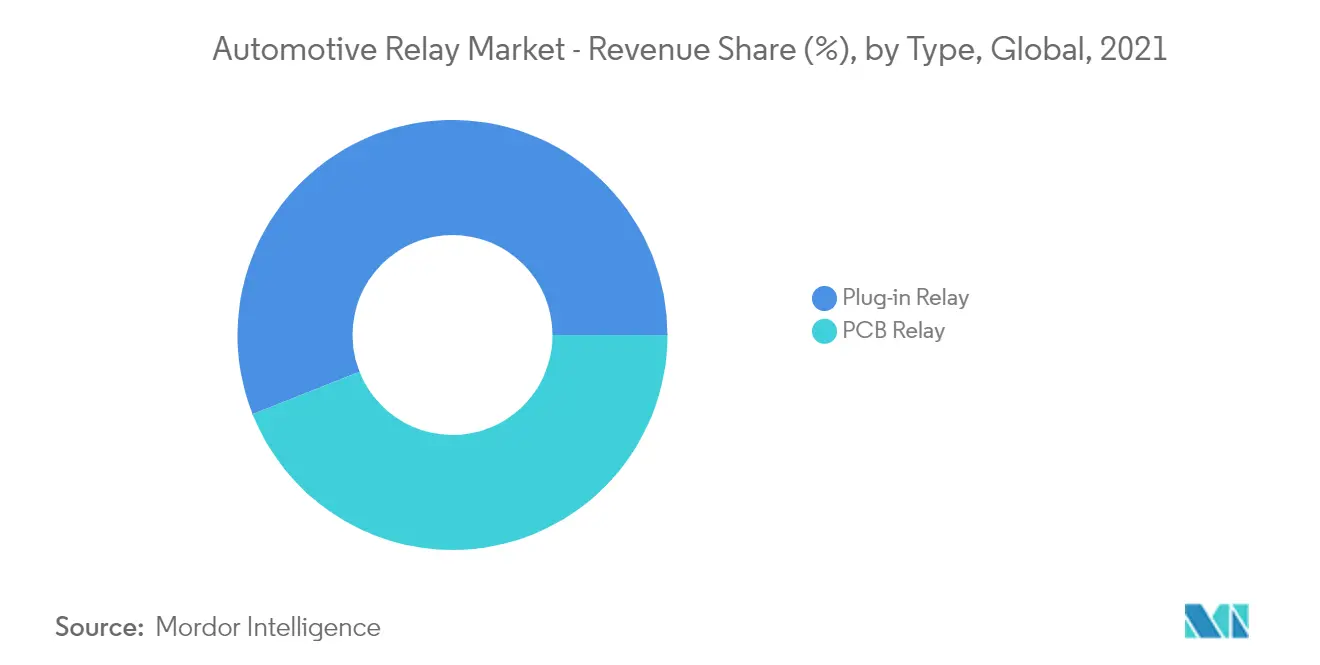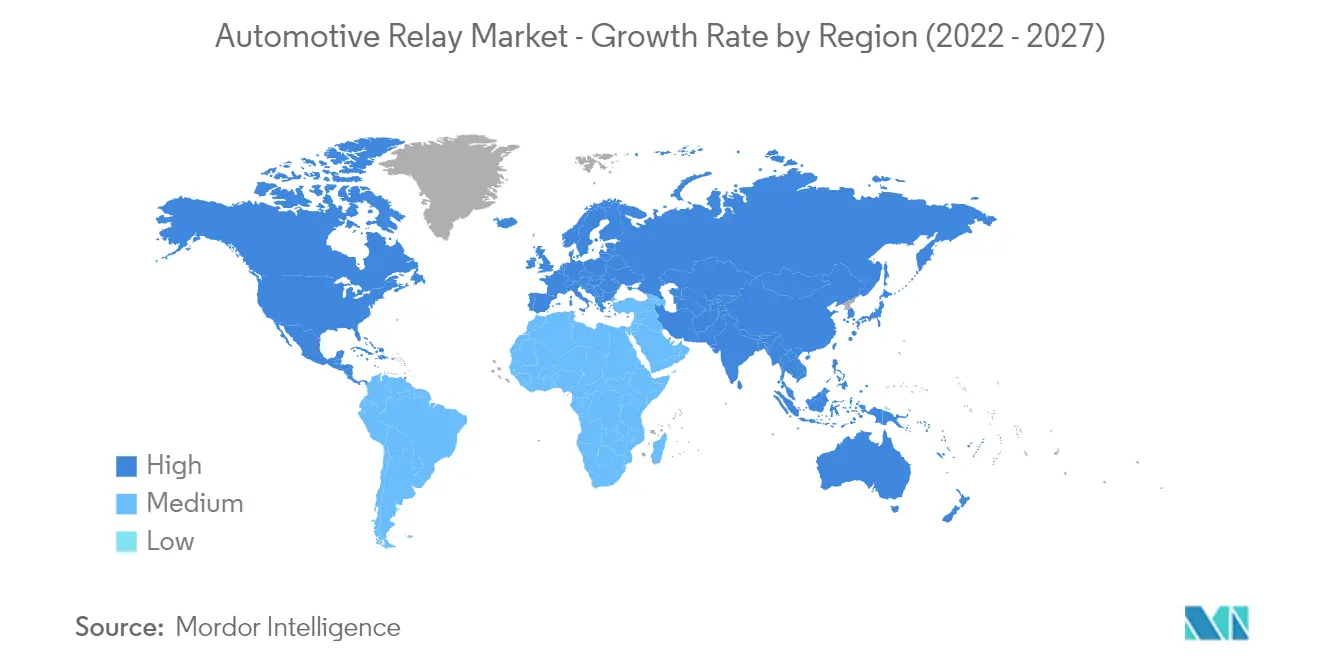Market Trends of Automotive Relay Industry
This section covers the major market trends shaping the Automotive Relay Market according to our research experts:
Plug-in Relay Segment to Witness Fast Growth
Currently, the demand for solid-state plug-in relays is growing, as they can handle high-rated currents (50A-80A) and operating voltages (less than 400V), similar to that of electromechanical type relays.
Apart from the longer service life of plug-in relays, their simple design structure and lightweight nature make them suitable as a close replacement for heavy electromechanical type relays.
A solid-state plug-in relay is deployed for various application fields of automobiles, such as electrically heated catalytic converters, fuel pumps, radiators fans, headlamps (low and high variations), defoggers, etc.
Moreover, plug-in relays are also available in three major operating characteristics with current-carrying capacities of 30A, 40A, and 70A. ABS (Anti-lock Braking System) controls are one of the prominent areas of applications for plug-in relays in the automotive market.
To meet the consistently growing demand for plug-in relays in automobiles, automotive electronics firms are focusing on manufacturing high-power and reliable relays for automotive applications.

Increasing Penetration of Automated Systems Driving the Adoption of Electronics in Automobiles Globally
The automotive industry is transitioning from hardware- to software-enabled vehicles, and the average software and electronics content per vehicle is increasing rapidly. The integration of new functions and features into the car is often enabled by electronics. Thus, there is increasing penetration of electronics into major application fields, including powertrain, safety management, body, and convenience or infotainment.
Both government involvement and consumers’ demand for greater automatic control of systems have resulted in the increased usage of electronics in vehicles. Electronics are offering new opportunities to improve energy efficiency and emission reduction as several functions can be consolidated into fewer and smaller electronic control super units, thereby reducing the weight. The high penetration rate of automobile electronics across all vehicle classes is being influenced by three major aspects, namely, productivity, quality, and innovation.
Efforts are being deployed in the automobile industry to transform consumers’ driving experience. Cars are becoming smarter and capable of conducting self-diagnostics. In the coming years, cars may be able to connect with each other effectively.
In addition, passenger safety is another factor driving the adoption of automated systems in automobiles. The installation of safety features and systems in vehicles has greatly aided in reducing the number of accidents and fatalities on the road over the past few decades.
With the increasing focus on autonomous vehicles and smart cars (with the ability to connect to each other, with vehicle-to-vehicle (V2V) and vehicle-to-infrastructure (V2I) communications) that can ensure safety and convenience to consumers, the demand for electronic systems in new cars has been increasing rapidly.
Newer generation automotive electronics that enhance the driver experience are witnessing mass adoption in mid-range and entry-level car segments and ease of availability through the aftermarket.
The rapidly growing use of electric components in the current and upcoming vehicles is consistently propelling the need for manufacturing reliable and standardized components for efficient, safe, and secure switching of electric loads. These factors are currently driving the market growth.

